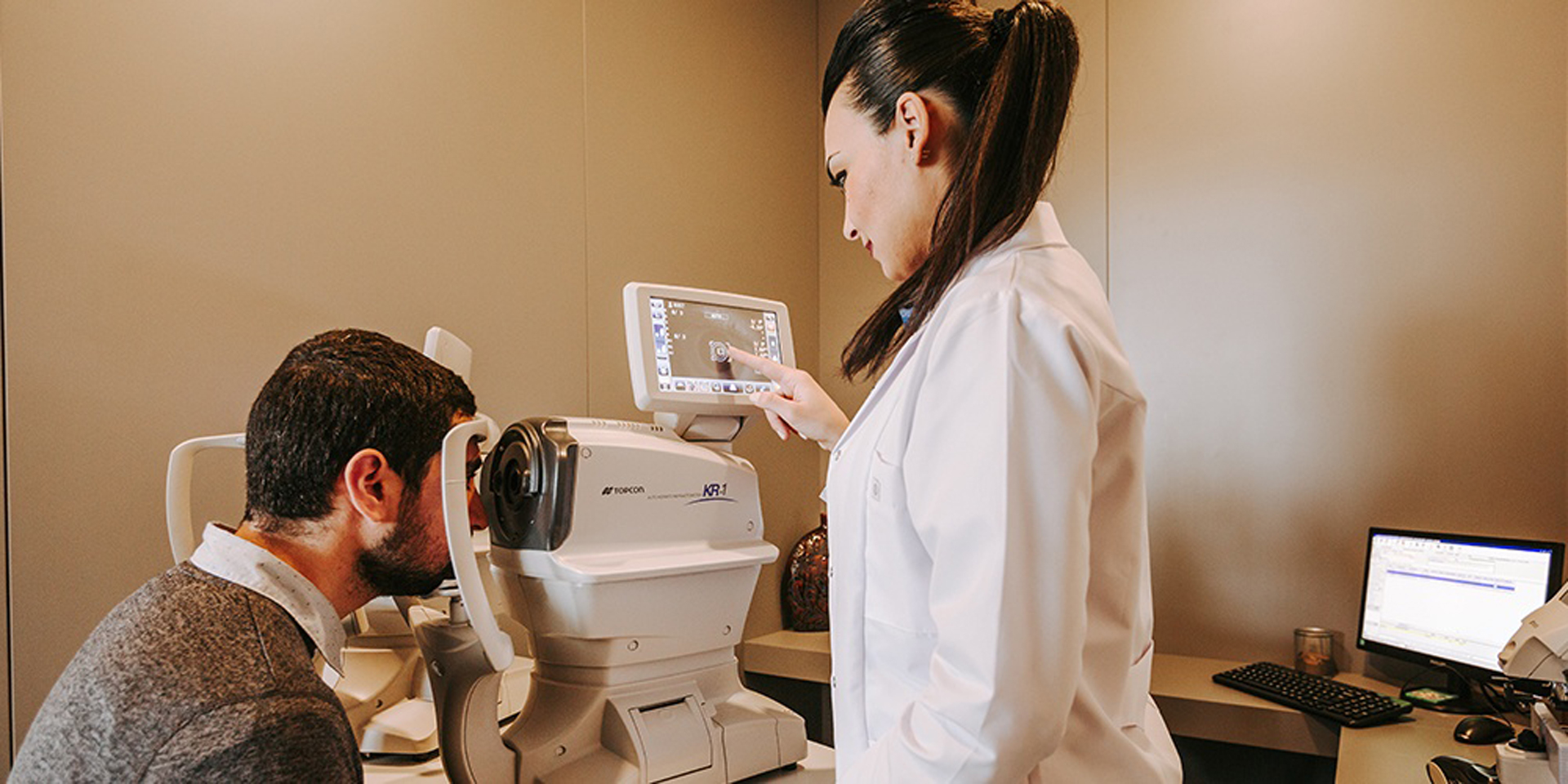Glaucoma is one of the leading causes of blindness in the world. In most patients it doesn’t give any symptoms. It is known as the ‘silent thief of sight’. For this reason , annual eye exams are recommended after the age of 40 ,especially to the ones who carry a risk factor for glaucoma.
Glaucoma is one of the leading causes of blindness in the world. In most patients it doesn’t give any symptoms. It is known as the ‘silent thief of sight’. For this reason , annual eye exams are recommended after the age of 40 ,especially to the ones who carry a risk factor for glaucoma.
Optic nerve ,which carry electrical signals to the brain is damaged due to the increase of intraocular pressure.Optic nerve is composed of 1.2 million nerve fibres. At the first stages of the disease the nerve fibres which are responsible for peripheral vision are affected. Thus , the patient’s visual field start to constrict at the initial phases of the disease . If left untreated , the patient loses his central vision in the end.
There is a fluid inside the eye which is made at a constant rate . This fluid is important for keeping the shape of the globe and for nutrishing the structures inside the eye. This fluid leaves the eye from a place called ‘trabecular meshwork’ (which is in the junction of cornea and iris inside the eye).In glaucoma patients , the resistance to drainage of this fluid increases . This results in the accumulation of this fluid , causing elevated pressure which can damage the optic nerve.
WHO HAVE A GREATER RISK OF GLAUCOMA?
--Age above 40. The greater the age , the higher the risk of glaucoma.
--Diabetics,
-- Positive family history(those whose first degree relatives have galucoma),
--Myopic or high hyperopic patients,
--Using some drugs such as cortizone for prolonged periods.
WHY IS EARLY DIAGNOSIS SO IMPORTANT ?
Early diagnosis is important because , the damage is irreversible. Treatment only stops the progression of the disease.
HOW DO WE DIAGNOSE GLAUCOMA?
Measuring only eye pressure is not enough for diagnosis in most cases. Some other tests should also be made to show the damage of the optic nerve. These tests are not only important for diagnosis , but also for monitoring the progression of the disease. In practice, we do the following :
- Measurement of eye pressure,
- Imaging optic nerve,
- OCT (Optic coherence tomography) :Measurement of the thickness of the nerve fibre layer of the optic nerve. In glaucoma patients , it gets thinner in time if left untreated.This is very important in the early diagnosis.
- Measurement of the thickness of the cornea (pachimetry).
- Evaluate the angle ( the place where the fluid is drained out of the eye)
- Visual Field Test: This is very important in both diagnosis and follow up of glaucoma. In glaucoma , the patients start to lose their peripheral vision in the initial stages .As the disease progresses , the central sight is affected in the end causing blindness.
WHAT ARE THE TYPES OF GLAUCOMA?
Mainly there are four types:
1: Primary open angle glaucoma(most common one ; more common in myopic patients) .
2: Primary narrow angle glaucoma(more common in hyperopic patients)
3:Secondary glaucoma: Due to some other eye diseases such as uveitis(inflammation inside the eye).
4: Developmental glaucoma: There is a structural abnormality in the angle from birth. It is seen in babies or during infancy . The babies with glaucoma have big and sometimes cloudy corneas.
These babies have excess lacrimation (watering ) and become more sensitive to light (photophobia) .
HOW DO WE TREAT GLAUCOMA?
The aim of the treatment is to lower the eye pressure .
It can be achieved in the following ways:
1: Eye drops,
2:Laser treatment ,
3:Surgery .
